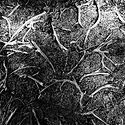blansky
Member
This thread raises the interesting philosophical question of what 'aperture' we naturally see at, and does it matter for our photographic methodology. We don't naturally see in deep focus, so wide angle street photography is essentially an exercise in surrealism rather than realism, which is one of the factors that differentiates it from photojournalism. Everything happens at once and is captured three dimensionally.
Shallow DoF, when taken to extremes, is also anti-naturalistic, locking the viewer into an uncompromising linear space. I would argue that the most naturalistic depiction of a subject (if we can talk about a mental phenomenon in optical terms), is clear focus on the subject with slightly larger defocused circles on the background, or the 'f4 effect'. None of this matters in a medium where time is an abstraction - with the unreality implicit in that deficit - but it's interesting to muse on the messages optics confer to an image.
While this is true, our eye focuses from subject to background and back in a millisecond so we don't actually see that a background is in or out of focus really. I doubt it's consciously relevant whether the background is sharp or not.
I'd argue that extreme 'eyes in, ears out, is surrealistic though.
Of course since we don't consciously really notice these things in real life, perhaps subconsciously, we do and that's why some photographs that distort our natural perception are ones that attract us or we are drawn to, for just that reason.
Last edited by a moderator:









